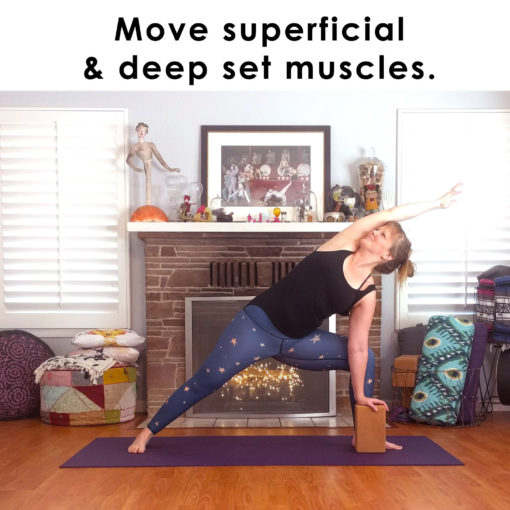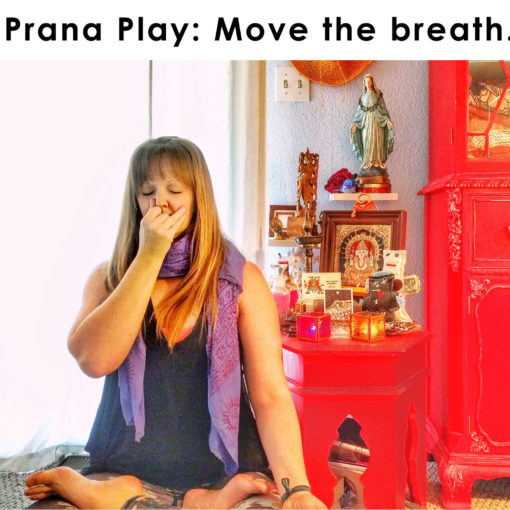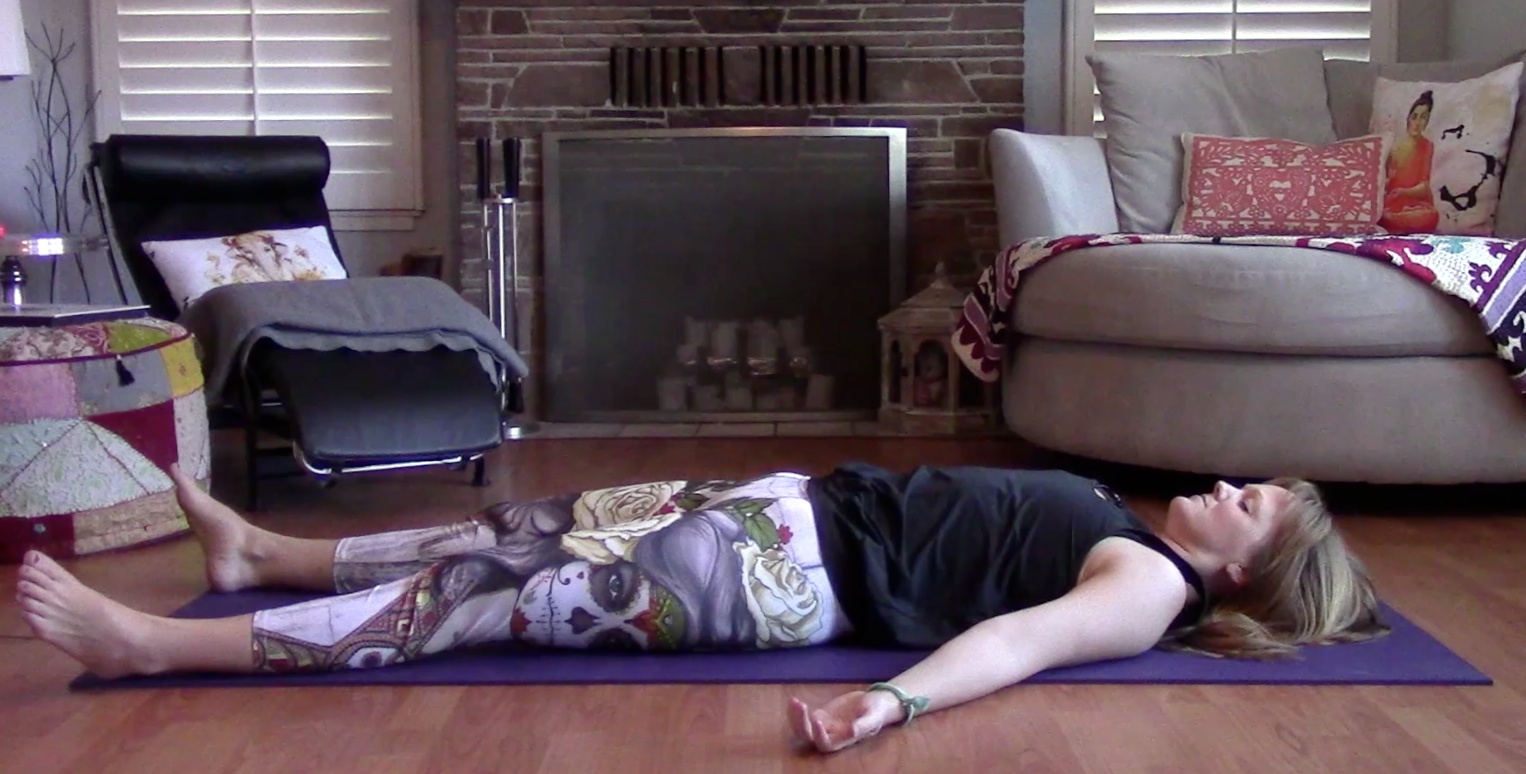
I teach yoga nidra on Fridays at Addison-Penzak Jewish Community Center. Every week, I have at least one person ask me, “What exactly is this practice?” So I thought I would offer my answer here, as well as provide a practice for those who would like to try this practice at home.
Nidra translates to sleep, with yoga nidra meaning “yogic sleep”. It is not a practice where you simply go to sleep, though in today’s tightly wound, over-worked society finding a little sleep in the middle of yoga nidra could be beneficial and just the thing you need. Traditionally, yoga nidra is a practice that takes one into a different state of consciousness, similar to a state of deep sleep or the dreamlike state, depending on how deep of a relaxed state you slip into.
Yoga nidra has quite a few benefits. The most obvious one is taking the time to let the body rest and relax helps soothe the sympathetic nervous system and find a balance between it and the parasympathetic nervous system. You can read my recent article Understanding the Nervous System to get a better understanding of why this is a good thing, but in short, you’ll find your digestion, immune response, and overall outlook on life improving.
Another great benefit I find when practicing yoga nidra is I come out of it feeling recharged. On days where I feel depleted, I take 30 minutes and rest in yoga nidra. At the least I feel not as depleted when I come back into my day, but often I feel as if I’ve slept for a few hours instead of rested for 20 – 30 minutes. Guiding our rest allows us to sink deeper into it more quickly, thus many say 30 minutes of yoga nidra is the equivalent of 2 hours of sleep. I can say I’ve felt this, often.
The last benefit I will mention here has to do with the ability to cultivate a quality in your life that you might be working on. When our body and mind come into this relaxed state, the frequency of our brainwaves change. At this point, much like in deep sleep, we are more open to suggestion. Do you remember the tapes people used to play while they slept to help them conquer a task they set out to achieve? I feel like this was an 80s thing, with people buying tapes to quit smoking, become more successful, or other such things. With yoga nidra, we don’t play tapes, but we can set a sankalpa.
A sankalpa is an intention or resolution that we set and repeat to ourselves silently. It might be something to aid you in achieving your ambitions, to create a change in your lifestyle, or to remove mental conflicts or negative blocks you have. It’s not a superficial statement about material things, such as, “I will own a new car,” or a force to drop a bad habit, such as the smoking example. Rather, it might be a quality you want to develop in life to help you achieve the goals. You might want to focus more on the present moment instead of being dragged into the past or being anxious about the future. Thus, you might set a sankalpa of “There is only now,” or “I am exactly where I should be in this moment.” Or, if there are old patterns you are trying to break free of, maybe setting an intention along the lines of “I will see the positive,” or “I will become more vulnerable,” will help you shed some of the blockages that have existed. If you set a sankalpa, it should be short, simple, sincere, and not too vague.
If setting a sankalpa is not your thing, then instead decide on a mantra, sound, or sensation to turn your mind to if it begins to wander in yoga nidra. It could be something as simple as noticing your inhale and exhale. Setting an intention of where your mind will rest if it runs wild will help you find relaxation of the mind a bit quicker and easier.
Finally, the set up for yoga nidra. You can simply rest in savasana, or you can use props to find yourself in your most relaxed state. The idea is you want to let the body be as comfortable as possible so you stay as still as possible. During the day I like to use a bolster under my knees and a bolster on blocks under my body to give it a little support. At night I use this practice to usher me towards sleep, so I simply get ready for bed, lay down on my back, and turn out the lights as I hit play. Regardless of day or night, I ensure I have plenty of blankets to keep me warm, because as the body relaxes it begins to cool down.
Are you ready to try the practice? Then download my two yoga nidra tracks and add them to your music library. I have created one for during the day, which will bring you back out of the practice, and one for ushering you toward sleep, that simply ends quietly. Just make sure if you’re doing the day practice you set an alarm in case you do fall asleep! There’s nothing worse than dozing off and then jolting awake, wondering if you’ve been here for minutes or hours. At night, make sure you don’t have another song queued up after the practice, otherwise you’ll be jolted out of your relaxed state.




